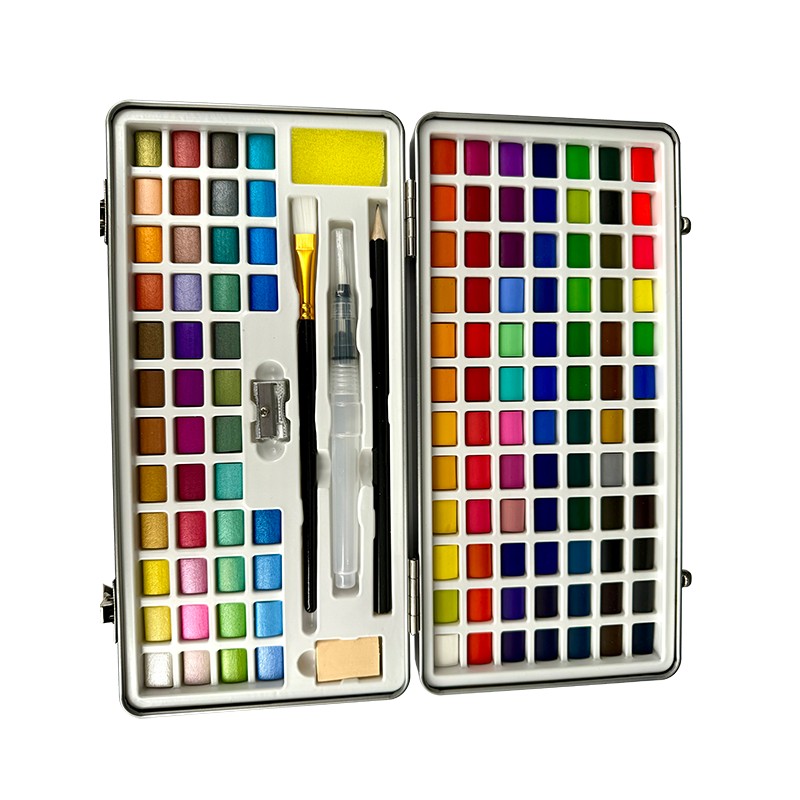- English
- Español
- Português
- русский
- Français
- 日本語
- Deutsch
- tiếng Việt
- Italiano
- Nederlands
- ภาษาไทย
- Polski
- 한국어
- Svenska
- magyar
- Malay
- বাংলা ভাষার
- Dansk
- Suomi
- हिन्दी
- Pilipino
- Türkçe
- Gaeilge
- العربية
- Indonesia
- Norsk
- تمل
- český
- ελληνικά
- український
- Javanese
- فارسی
- தமிழ்
- తెలుగు
- नेपाली
- Burmese
- български
- ລາວ
- Latine
- Қазақша
- Euskal
- Azərbaycan
- Slovenský jazyk
- Македонски
- Lietuvos
- Eesti Keel
- Română
- Slovenski
- मराठी
- Srpski језик
How Watercolour Paint is Made
2025-02-25
Watercolour paint has been a cherished medium for artists for centuries, known for its luminous transparency and delicate blending capabilities. But have you ever wondered how these vibrant colours come to life? In this blog, we’ll explore the fascinating process of making watercolour paint, from raw materials to the final product.
The Key Ingredients of Watercolour Paint
Watercolour paint is composed of three primary components:
1. Pigment – This is the substance that gives paint its colour. Pigments can be natural (extracted from minerals, plants, or insects) or synthetic (chemically produced for consistency and vibrancy).
2. Binder (Gum Arabic) – This natural resin, obtained from acacia trees, holds the pigment together and allows it to adhere to paper when mixed with water.
3. Additives – Ingredients such as glycerin (for smooth application), honey (to keep the paint moist), and ox gall (to enhance flow) are sometimes included to improve the paint’s performance.

The Manufacturing Process
1. Sourcing and Preparing the Pigment
The process begins with selecting and grinding the pigment into an extremely fine powder. This ensures smooth consistency and even dispersion in the final paint.
2. Mixing the Binder
The powdered pigment is combined with a gum arabic solution, which acts as a binder. This mixture is carefully blended to achieve the right consistency—neither too thick nor too runny.
3. Mulling the Paint
The pigment and binder mixture is further refined using a process called mulling. A glass or stone slab is used along with a muller to evenly distribute the pigment within the binder. This step is crucial in achieving the smooth, rich texture of professional watercolour paint.
4. Adjusting with Additives
Depending on the desired properties, additional ingredients such as honey, glycerin, or preservatives may be added to enhance flow, moisture retention, and longevity.
5. Testing and Quality Control
Before packaging, samples of the paint are tested for colour intensity, transparency, drying time, and re-wettability. This ensures a consistent and high-quality product for artists.
6. Packaging the Paint
Once the paint passes quality checks, it is either poured into tubes while still wet or dried into pans for convenient use. Tubes are popular for more fluid applications, while pans are preferred for portability and long-lasting use.
The Magic of Handmade Watercolours
Many artists enjoy making their own watercolour paint using traditional methods. Handmade watercolours often have a unique texture and depth, offering a personalized experience compared to mass-produced paints.
Concluding remarks
A delicate fusion of art and science goes into creating watercolor paint. Every paint color, whether manufactured in a factory or by hand, tells a tale of meticulous attention to detail, perseverance, and creative passion. Think about the complex process that creates these stunning colors the next time you dip your brush into a pool of watercolour.
Have you ever attempted creating your own watercolor paint or do you have a favorite brand? Leave a comment below with your opinions!
Changxiang enjoys an excellent reputation for its high quality and advanced technologies and it sets itself the goal of producing watercolors for premium demands. For this purpose,as well as the aesthetic aspects,it also includes technical and physical performance values.Visit our website at www.watercolors-paint.com to learn more about our products. For inquiries, you can reach us at andy@nbsicai.com.




